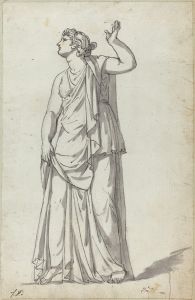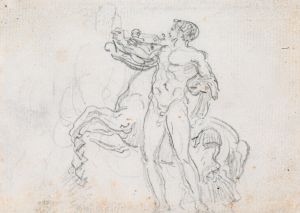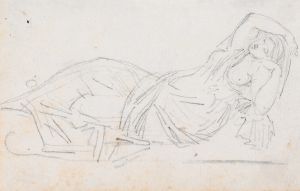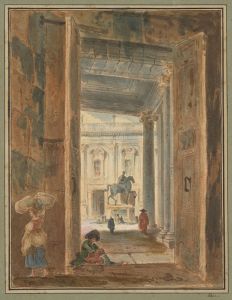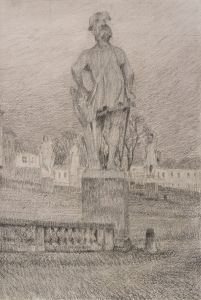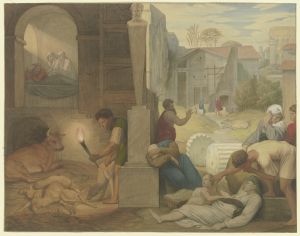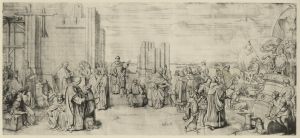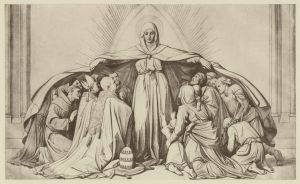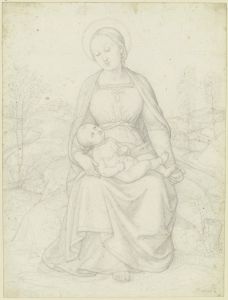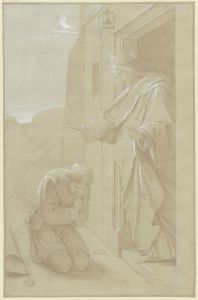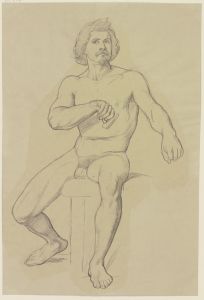
Kopf des Heiligen Carlo Borromeo für eine Statue der fürstlich Löwenstein-Wertheimschen Kapelle zu Kleinheubach
A hand-painted replica of Eduard von Steinle’s masterpiece Kopf des Heiligen Carlo Borromeo für eine Statue der fürstlich Löwenstein-Wertheimschen Kapelle zu Kleinheubach, meticulously crafted by professional artists to capture the true essence of the original. Each piece is created with museum-quality canvas and rare mineral pigments, carefully painted by experienced artists with delicate brushstrokes and rich, layered colors to perfectly recreate the texture of the original artwork. Unlike machine-printed reproductions, this hand-painted version brings the painting to life, infused with the artist’s emotions and skill in every stroke. Whether for personal collection or home decoration, it instantly elevates the artistic atmosphere of any space.
Eduard von Steinle (1810-1886) was a prominent Austrian painter associated with the Nazarene movement, which sought to revive the spirituality and style of medieval and early Renaissance art. One of his notable works is "Kopf des Heiligen Carlo Borromeo für eine Statue der fürstlich Löwenstein-Wertheimschen Kapelle zu Kleinheubach" (Head of Saint Carlo Borromeo for a Statue in the Princely Löwenstein-Wertheim Chapel in Kleinheubach).
This artwork was created as part of a commission for the Löwenstein-Wertheim family, a noble lineage with significant influence in the region. The chapel in Kleinheubach, located in Bavaria, Germany, is known for its rich artistic heritage and serves as a burial site for the family. The commission reflects the family's dedication to their faith and their desire to enhance the spiritual ambiance of their private chapel.
Saint Carlo Borromeo (1538-1584) was a cardinal and archbishop of Milan, known for his role in the Counter-Reformation and his efforts to implement the decrees of the Council of Trent. He is venerated as a saint in the Roman Catholic Church, and his legacy includes significant contributions to church reform and education. The depiction of Saint Carlo Borromeo by Steinle captures the saint's piety and dedication, characteristics that made him an ideal subject for religious art in a chapel setting.
Steinle's approach to this work is consistent with the principles of the Nazarene movement, which emphasized a return to the clarity, simplicity, and spiritual intensity of pre-Renaissance art. His portrayal of Saint Carlo Borromeo is marked by a serene and contemplative expression, reflecting the saint's inner devotion and commitment to his faith. The attention to detail in the facial features and the use of light and shadow demonstrate Steinle's skill in creating a lifelike and spiritually resonant image.
The statue for which this head was designed would have been a focal point in the chapel, intended to inspire devotion and reflection among the worshippers. Steinle's work on this piece would have involved careful study of religious iconography and an understanding of the saint's historical and spiritual significance.
Eduard von Steinle's contributions to religious art are well-regarded, and his works can be found in various churches and collections across Europe. His ability to convey deep spiritual themes through his art has earned him a lasting place in the history of 19th-century religious painting.
In summary, "Kopf des Heiligen Carlo Borromeo für eine Statue der fürstlich Löwenstein-Wertheimschen Kapelle zu Kleinheubach" by Eduard von Steinle is a significant work that exemplifies the artist's commitment to the Nazarene ideals and his skill in religious portraiture. The piece reflects the spiritual and artistic values of its time and continues to be appreciated for its historical and devotional significance.





